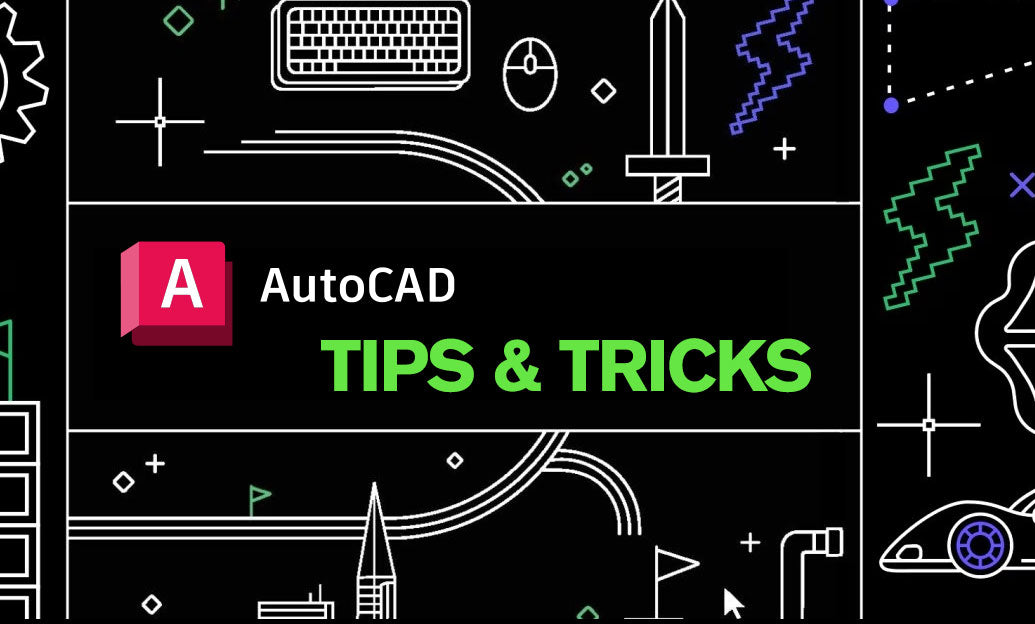Your Cart is Empty
Customer Testimonials
-
"Great customer service. The folks at Novedge were super helpful in navigating a somewhat complicated order including software upgrades and serial numbers in various stages of inactivity. They were friendly and helpful throughout the process.."
Ruben Ruckmark
"Quick & very helpful. We have been using Novedge for years and are very happy with their quick service when we need to make a purchase and excellent support resolving any issues."
Will Woodson
"Scott is the best. He reminds me about subscriptions dates, guides me in the correct direction for updates. He always responds promptly to me. He is literally the reason I continue to work with Novedge and will do so in the future."
Edward Mchugh
"Calvin Lok is “the man”. After my purchase of Sketchup 2021, he called me and provided step-by-step instructions to ease me through difficulties I was having with the setup of my new software."
Mike Borzage
Design Software History: Evolution of NURBS to Subdivision Surfaces: Transforming Digital Design Through Mathematical Innovation and Enhanced Creative Workflows
October 07, 2025 12 min read


Overview of NURBS: Definition and Mathematical Foundations
The development of NURBS (Non-Uniform Rational B-Splines) transformed the digital design landscape soon after its inception by providing a very powerful mathematical framework for modeling curves and surfaces. Originally formulated on a foundation of B-spline theory, this method introduced the notion of weight manipulation to control the influence of control points, which brought unprecedented flexibility and precision to computer-aided design (CAD). Designers found that NURBS allowed them to represent complex geometries, from simple curves to intricate freeform surfaces, in a single, unified approach that could be refined with mathematical elegance. Many experts in the field, including early pioneers who had previously relied on simpler interpolative curves, quickly recognized that the inclusion of weights and non-uniform knot vectors allowed designers to mimic organic shapes and precisely control curvature. This mathematical approach provided a standard method that could be implemented in software systems and integrated into the emerging computer graphics and design industries.
Mathematical Underpinnings of NURBS
At the heart of NURBS are algorithms and mathematical models that rely on polynomial bases to generate smooth and continuous shapes. This approach employs recursive formulas and blending functions to achieve high levels of detail. Designers appreciated that the same methodology allowed for both interpolation and approximation of data, leading to a dual capability that proved immensely valuable during the early stages of CAD development. The combination of weighted control points and flexible knot vectors enabled a level of precision that was previously unattainable with traditional geometric representation. In practice, the following features have been highlighted by professionals over the years:- Flexibility in curve definition – the ability to adjust the degree of the curve and the influence of control points
- Smooth continuity – ensuring that transitions between curve segments remain visually and mathematically smooth
- Accuracy in modeling – reproducing exact conic sections and other complex figures
Early Adoption in CAD and Industry Pioneer Influences
The introduction of NURBS coincided with a period of explosive growth in computer-aided design technologies and marked a turning point for precision engineering and digital modeling. As CAD software became more sophisticated, many influential companies sought to take advantage of the mathematical properties offered by NURBS in order to achieve superior levels of smoothness and control in their models. In the early phases of adoption, prominent engineering firms and research institutions alike experimented with these techniques, validating them through a range of applications. For many innovators in the 1980s and 1990s, the promise of representing freeform surfaces with unprecedented accuracy was a compelling reason to shift from more rudimentary methods. Industry pioneers such as those working in aerospace engineering and automotive design began to integrate NURBS into their development cycles, primarily because of its ability to not only offer intricate detail but also maintain precision during iterative design processes.
Key Influences and Practical Adoption
The influence of early adopters was substantial in that they set industry benchmarks by showcasing how NURBS could address real-world design challenges. Among the foremost examples were companies that specialized in high-performance vehicles and advanced aeronautics, where the geometric complexities of streamlined surfaces demanded more than conventional curve modeling. It was during this era that designers began to appreciate the following benefits:- Increased precision in representing curves and surfaces, ensuring that intricate designs remained true to the conceptual vision.
- Smooth integration with evolving CAD software platforms, which allowed for seamless transitions from initial sketches to final production ready models.
- Enhanced control over every aspect of the design process, from subtle modifications in curvature to dramatic shifts in shape.
Technical Constraints in NURBS for Complex Geometries
Despite their many advantages, NURBS soon became recognized for several inherent limitations when it came to representing complex geometries and organic forms. As digital design and simulation demands grew, it became clear that while NURBS excelled at handling smooth curves and standard surfaces, they encountered difficulties when tasked with modeling highly intricate or irregular shapes. One of the primary issues was that the mathematical structure of NURBS inherently favored controlled, smooth transitions but did not easily lend itself to unpredictable organic forms. This often necessitated workarounds such as patching multiple NURBS surfaces together to approximate more complex designs, a process that not only increased the overall computational cost but also introduced potential artifacts or discontinuities in the model. The limitations that emerged were especially visible in industries requiring high fidelity representations of natural shapes, where designers found that the strict mathematical constraints sometimes hindered intuitive creativity.
Challenges in Representing Organic Complexity
The struggle to accurately represent organic geometries using NURBS led to several technical challenges. Designers had to contend with the following issues:- Difficulty in patching surfaces: Achieving smooth transitions between patched surfaces often required meticulous tuning and sometimes resulted in noticeable gaps or seams.
- High computational costs: As the complexity of the model increased, so did the reliance on computational resources, making intricate designs a burden on system performance.
- Limited design flexibility: The rigidity of the spline-based system sometimes constrained design freedom, preventing designers from easily experimenting with unexpected geometrical variations.
Modeling Flexibility Limitations and Computational Burdens
As the industry continued to push the boundaries of design capabilities, the constraints of NURBS became even more pronounced. Many designers experienced firsthand how the rigidity of the mathematical framework impacted the modeling of complex, highly detailed designs, particularly for organic shapes encountered in consumer products and architectural forms. The requirement to construct multiple adjoining NURBS patches to model a single organic surface led to significant computational overhead. In addition, the inability to easily modify the topology—without rearranging control points extensively—limited the adaptability of models during the iterative design process. This process often resulted in designs that were both time-consuming to update and challenging to perfect, particularly when designers sought to implement subtle, flowing transitions characteristic of natural forms.
Impact on Workflow and Software Efficiency
These challenges presented a dual problem: not only were computational resources taxed by the heavy mathematical computations required for each adjustment, but the inflexibility of the surface topology also throttled creative potential. The resulting design workflows had to contend with increased iteration times and potential inconsistencies in the final models. Key limitations included:- High computational costs – requiring powerful hardware to process complex designs in real time.
- Difficulty in achieving organic realism – the spline nature inherently favored smooth, regular curves, making subtle irregularities hard to replicate.
- Labor-intensive modifications – each change in design often meant substantial reworking of the control point network.
Core Principles of Subdivision Surface Technology and Their Advantages
In response to the challenges posed by NURBS, subdivision surface technology emerged as a robust alternative for modeling complex, organic shapes. Subdivision surfaces rely on the idea of recursively refining a coarse polygonal mesh into a smoother, more detailed surface. This approach allowed for a level of flexibility and ease of modification that was unavailable with traditional spline-based models. By splitting faces and adjusting vertices, designers could progressively enhance a model’s detail, achieving smooth curves and intricacies that closely resemble naturally occurring forms. One of the most significant advantages of subdivision surfaces is their inherent capacity for fostering creativity—designers are now able to manipulate a simple mesh and observe its continuous transformation into a high-fidelity surface representation. The mathematical elegance of the subdivision process is built on iterative algorithms that continually refine detail without the need for complex control point networks, as seen in NURBS. The advantages of this method were profoundly felt across multiple domains including automotive design, where the fluid, aerodynamic curves of modern vehicles necessitated more organic modeling approaches.
The Advantages of Recursive Mesh Refinement
Subdivision surfaces offer a range of benefits which include:- Ease of manipulation: The method allows designers to start with a simple polygon mesh and iteratively refine it into smooth, intricate surfaces.
- Dynamic modification: As changes are made at a low level, the entire structure adjusts seamlessly, providing a highly efficient workflow.
- Enhanced realism: The ability to represent natural, organic shapes more accurately than traditional spline methods.
The Impact of Subdivision Surfaces in Automotive, Animation, and Consumer Product Design
The practical implementation of subdivision surface technology made a profound impact across industries where the need for capturing organic and freeform designs is vital. In the automotive sector, for instance, the sleek, aerodynamic contours of modern vehicles often demanded levels of detail and fluid forms that were challenging to replicate with NURBS. Subdivision surfaces provided a solution that allowed designers to intuitively adjust curves at both macro and micro levels, resulting in vehicles that were not only visually appealing but also aerodynamically efficient. Similarly, in animation and consumer product design, the flexibility offered by this method enabled creative professionals to achieve character models and product prototypes that resonated with lifelike detail and fluidity. By facilitating a smoother workflow and reducing the computational load associated with reworking extensive control point networks, subdivision surfaces essentially democratized the design process and reduced turnaround times significantly.
Key Industrial Advantages and Workflow Integration
The advantages of subdivision surfaces in these fields can be summarized in several key points:- Improved Workflow Efficiency: The method allowed for quick modifications without requiring wholesale rework of previously established geometrical data.
- Enhanced Detail Replication: Designers could capture subtle nuances in form, allowing for more expressive and natural designs.
- Reduced Computational Burden: The iterative nature of the method meant that details were built progressively, reducing the upfront computational cost and resource intensity associated with large models.
Integration into Modern Design Software Workflows and Future Paradigms
Modern design software has long since embraced the strengths of subdivision surfaces, incorporating them into comprehensive workflows that integrate with traditional NURBS systems where necessary. This convergence of technologies allows designers to harness the best features of both methodologies, ensuring that precision and flexibility go hand in hand. Software vendors have developed hybrid systems that let users switch effortlessly between mathematically robust spline representations and artist-friendly mesh-based subdivisions. This synergy has been particularly impactful in industries like digital animation, where the need for both exact geometric control and expressive, dynamic form transformations is paramount. As the capabilities of computing hardware continue to improve, these software solutions are becoming even more powerful, leveraging real-time rendering and advanced simulation techniques to provide immediate visual feedback as designers mold their creations. The result is a design ecosystem that not only encourages creativity but also streamlines the technical processes necessary to realize complex projects.
Driving Future Design Paradigms
Emerging trends in design software are also beginning to focus on further integration of machine learning and artificial intelligence to assist with subdivision processes and automated refinements. Future developments are expected to include:- Adaptive mesh refinement: Tools that automatically adjust mesh detail based on local curvature, optimizing model fidelity and computational efficiency.
- Real-time simulation: Integration with virtual reality and augmented reality platforms for immersive design experiences.
- Enhanced user interactions: Interfaces that allow intuitive sculpting of forms while automatically managing the underlying subdivision logic.
Evolution from NURBS to Subdivision Surfaces: A Technological Journey
The journey from NURBS to subdivision surfaces represents one of the most compelling evolutions in the history of design software. Early on, designers celebrated the precision and mathematical reliability of NURBS, yet soon discovered that, despite its strengths, the approach imposed certain limitations when applied to the testing boundaries of organic and freeform design. As design challenges grew in complexity, especially with the advent of consumer demand for highly intricate and lifelike models, the gradual shift towards subdivision surfaces emerged as a natural progression. This transition was underpinned by the recognition that digital design software must evolve alongside shifting creative ambitions. Pioneers in the field began to experiment with recursive mesh manipulation techniques that not only simplified the modeling process but also introduced an element of creative spontaneity unseen in the earlier, more rigid frameworks.
Historical Milestones in the Evolution
Over the decades, the evolution has been marked by several key milestones that shaped the modern design landscape:- Breakthrough innovations: Early demonstration projects validated the potential for subdivision surfaces to capture subtle organic detail with less manual intervention.
- Integration of hybrid models: Software systems began to merge the reliability of NURBS with the flexibility of subdivision techniques, offering a best-of-both-worlds approach.
- Adoption by key industries: As automotive, consumer electronics, and animation studios sought faster, more intuitive workflows, subdivision surfaces quickly proved to be a transformative tool.
Future Perspectives and Emerging Modeling Techniques Shaping Digital Design
Looking ahead, the digital design landscape is poised to continue benefiting from the pioneering strides made by both NURBS and subdivision surface paradigms. As design challenges evolve further, new modeling techniques are emerging that promise to integrate the precision of traditional mathematical models with the adaptive, user-friendly workflows of subdivision-based methods. Emerging technologies in real-time simulation, augmented reality, and even artificial intelligence are beginning to influence how designers approach model creation, driving the development of hybrid methods that can intelligently manage levels of detail while still providing the necessary control for high-fidelity output. Many in the design community anticipate that the next wave of innovation will blur the distinction between traditional surface definitions and dynamic topology manipulation, resulting in systems that can effortlessly adapt to the creative needs of artists while ensuring the precision demanded by engineering applications.
Emerging Technologies and Their Impact on Digital Modeling
The future of digital design is expected to be shaped around several key trends:- AI-assisted modifications: Systems that learn from designer inputs to automatically optimize mesh refinement and surface detailing.
- Hybrid modeling environments: Platforms that offer the combined strengths of NURBS, subdivision surfaces, and procedural generation techniques.
- Real-time simulation tools: Integration with immersive technologies like VR/AR to provide instant feedback as designs evolve.
Also in Design News

Cinema 4D Tip: Optimizing the Use of Surface Deformer for Enhanced Geometry Projection in Cinema 4D
October 09, 2025 2 min read
Read More
Bluebeam Tip: Maximize Efficiency and Precision Using Bluebeam Revu's Pen Tool for Enhanced Document Markups
October 09, 2025 2 min read
Read More
AutoCAD Tip: Enhance AutoCAD Precision and Efficiency with Measure and List Commands
October 09, 2025 2 min read
Read MoreSubscribe
Sign up to get the latest on sales, new releases and more …


